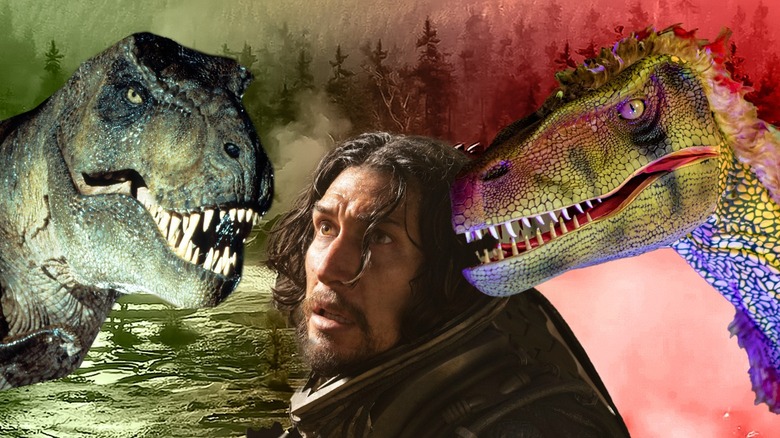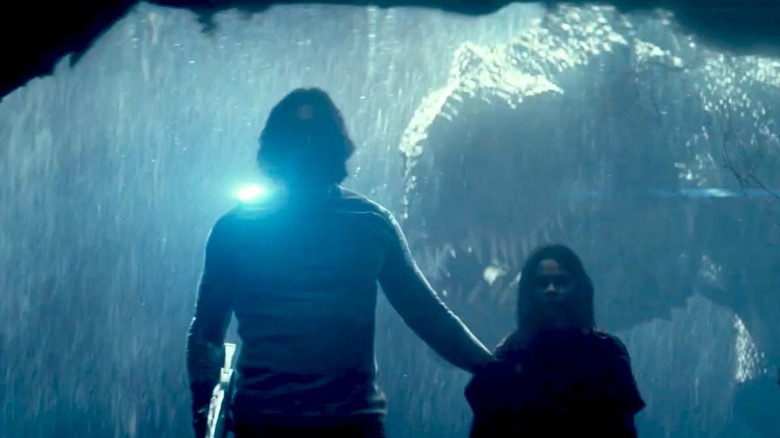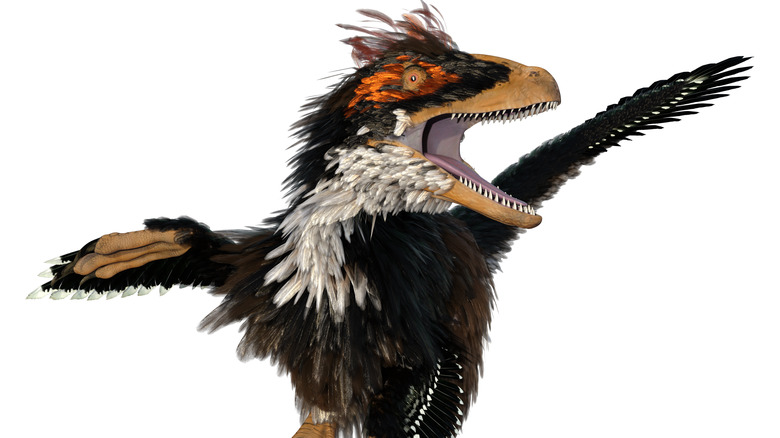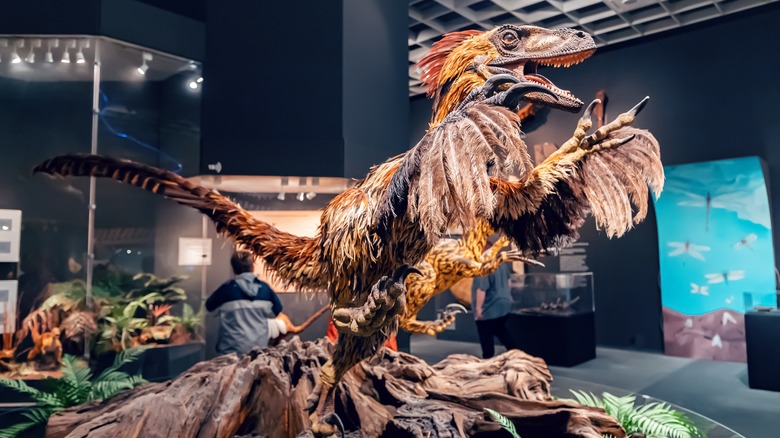65's Jurassic Park-Style Dinosaurs Are An Outdated Misstep - Hollywood Should Pay Attention To Science
There are many films out there that are regarded as classics, but how many of them can be considered genuine game-changers? Steven Spielberg's "Jurassic Park" wasn't the first movie in history to depict dinosaurs causing havoc by any means, but it's inarguably the most influential of the bunch, as it actually changed the way movies were made.
Hollywood experimented with CGI prior to 1993. With "The Abyss" and "Terminator 2: Judgment Day," James Cameron showed that the technique was destined to become the future of filmmaking someday. However, "Jurassic Park" is the film that ushered in the digital era of filmmaking across the board, and the industry has never looked back. Spielberg's blockbuster is the first movie to create organic creatures with computer animation, and the visual effects still hold up to this day.
Furthermore, "Jurassic Park" arguably informed the way that people perceive dinosaurs in general. After all, not everyone studies paleontology, and this franchise has been all over our screens for three decades. At the time of the film's release, dinosaur science wasn't as informed as it is today, so no one can blame "Jurassic Park" for presenting its creatures the way it did. Unfortunately, cinema has yet to catch up with the scientific breakthroughs regarding dinosaurs that followed in its wake, as evidenced by the latest dinosaur movie to hit the market.
That film, the Adam Driver-starring "65," is a rare modern dinosaur blockbuster that isn't associated with the "Jurassic Park" series, but the film is cut from a similar cloth — and it's a reminder that dinosaurs are being misrepresented on the big screen.
65 wants to change things, but the shadow of Jurassic Park looms large
Scott Beck and Bryan Woods, the writer-director team behind "65," have an admirable outlook when it comes to dinosaurs on the big screen. In a recent interview with Polygon, they gushed about their lifelong fascination with the creatures and asked the question we've all been thinking: "Do Spielberg and Universal [Pictures] have a monopoly on dinosaurs? Or is there a way to do one in a way that we haven't seen before?"
Well said. The "Jurassic Park" saga has ruled over the dinosaur movie (fallen) kingdom since its inception, and Hollywood has been generally reluctant to greenlight movies of this ilk outside of this particular franchise. Change is needed, and "65" deserves credit for trying to usher in a new age for prehistoric predators in our entertainment. Beck and Woods' effort sets its story in a primordial setting and the film aims to present dinosaurs as truly terrifying, but is that enough to escape the shadow of Spielberg's classic?
No matter how hard "65" tries to set itself apart from Hollywood's dominant dinosaur franchise, comparisons are inevitable as it features the same types of dinosaurs that audiences have grown accustomed to because of "Jurassic Park." Most of the creatures in "65" are of the familiar, scaly, CGI variety that Spielberg's movie popularized. In order for dinosaur movies to truly escape the shadow of "Jurassic Park," they need to embrace modern paleontological discoveries.
Dinosaur movies should look to science for inspiration
The science of "Jurassic Park" is questionable. The story is essentially a riff on Mary Shelley's "Frankenstein," a parable about irresponsible innovation that comments on the dangers of human-made creation. "Jurassic Park" hammers that message home with the ferocity of a T-rex eating a vehicle, so it doesn't have to worry about the facts. That said, the film doesn't accurately depict how dinosaurs actually looked, and Hollywood has adopted this bad habit.
Paleontologists have uncovered countless fossils that provide some interesting revelations about dinosaurs. However, movies have led us to believe that species such as Velociraptors were scaly reptiles. Meanwhile, the empirical evidence shows that they — along with countless other species — had feathers. Similarly, "Jurassic Park" portrays the Dilophosaurus as a tiny creature with poisonous spit. However, its real-life counterpart was 20 feet long and didn't produce venomous saliva at all.
There's nothing wrong with taking creative liberties for the sake of entertainment. After all, poisonous reptiles are scarier than feathered creatures. However, majestic, bird-like dinosaurs can still be terrifying, so moviemakers wouldn't have to redefine creature features to accommodate more authentic versions of the prehistoric wonders. For example, the Anzu Wyliei has been described as a demonic chicken, even though the creature mostly fed on plants. Still, its aesthetic qualities make it perfect for cinematic creature feature purposes — and that's just one example. With new evidence being uncovered by the day, the well of inspiration for dino flicks is truly endless.
Creature features are great, but how about some new dinosaur stories?
From "The Lost World" to "Jurassic Park" to "65," dinosaur movies have mostly always been about humans encountering the wrath of prehistoric creatures. Granted, the "Jurassic Park" franchise does feature some harmless herbivores, but they take a backseat to their scarier peers. Elsewhere, "The Land Before Time" and "The Good Dinosaur" provide cute talking dinosaurs, but they fall into the realm of kids' entertainment and their stories are pretty vanilla. There's nothing wrong with that, but does the genre have to stick to the same old beats?
For the dinosaur genre to maximize its full potential, it needs fresh types of stories. Of course, there's only so much one can do with giant creatures, but it seems that Hollywood isn't even trying to come up with fresh material. "65" adds some time travel to the mix, but stories of this ilk are commonplace in science fiction. There's an entire literary genre dedicated to stories about humans traveling to the past for the sole purpose of hunting prehistoric creatures, and it was popularized by books like Ray Bradbury's "A Sound of Thunder."
Still, there's nothing wrong with repurposing old ideas and making them new again, and some dinosaur movies could benefit from blending old concepts with more true-to-life creature designs. "The Valley of the Gwangi" had the ingenious idea of pitting cowboys against dinosaurs and it's great fun, and that could be a fun concept in the modern age — especially if it adhered to the science to some degree. The aforementioned Anzu Wyliei dinosaur was native to Montana and South Dakota, so this beast would lend itself to a Western/dinosaur movie crossover. That's just one idea — it's just up to talented creators to come up with better ones.



